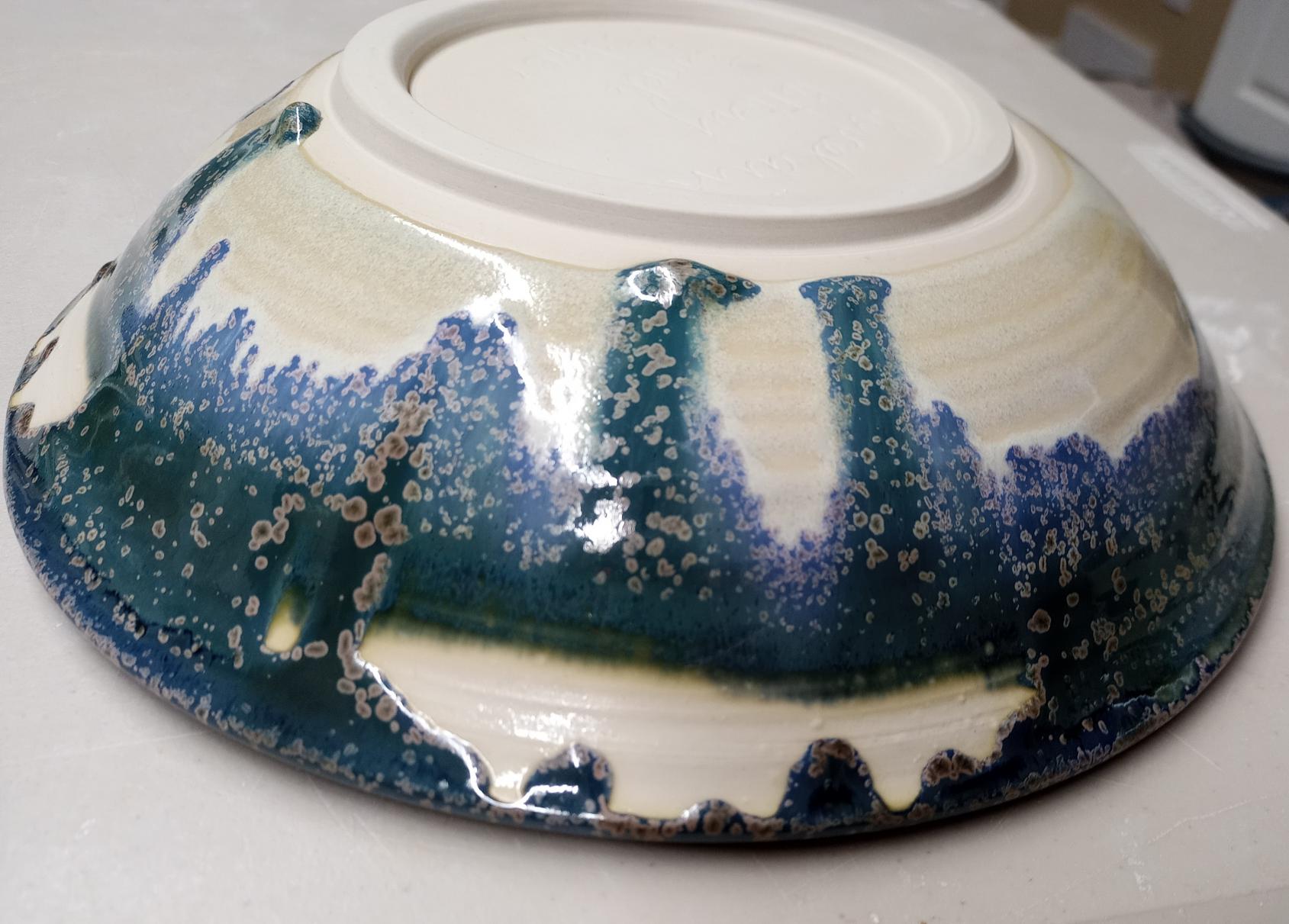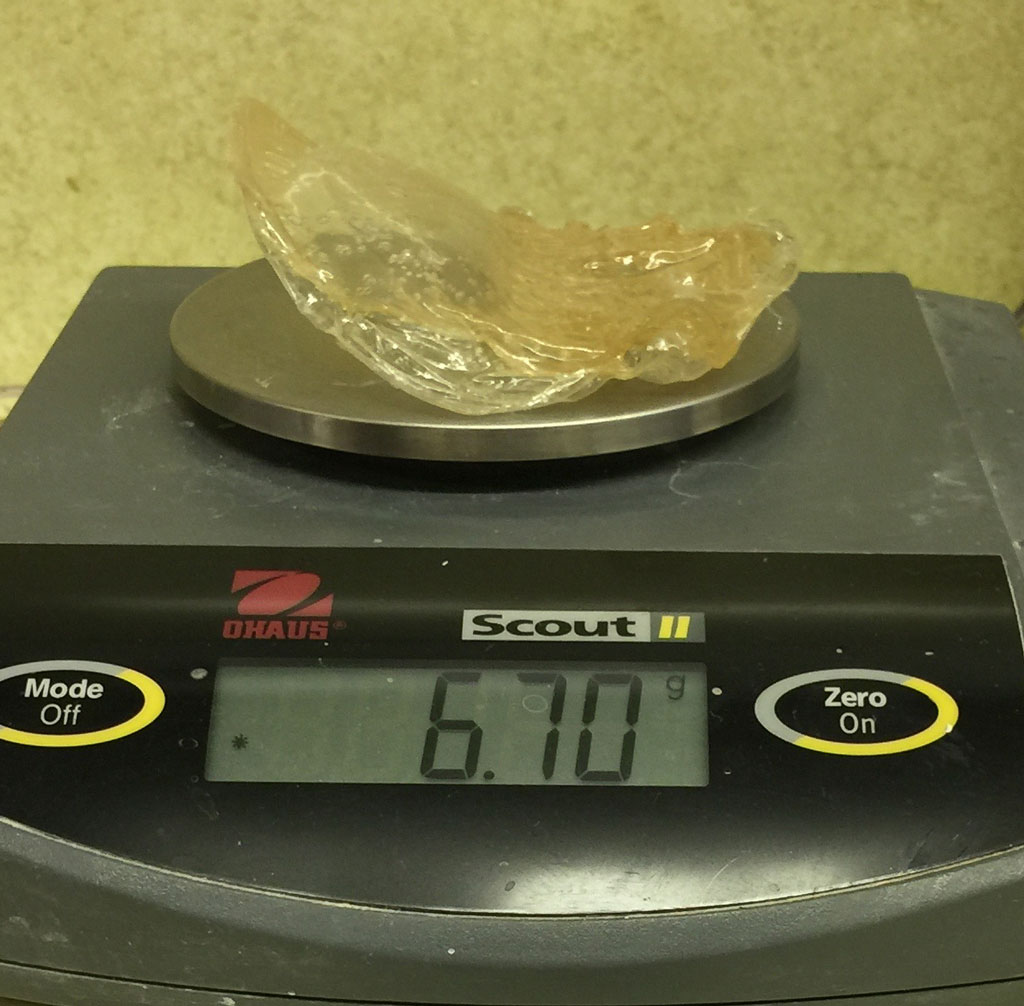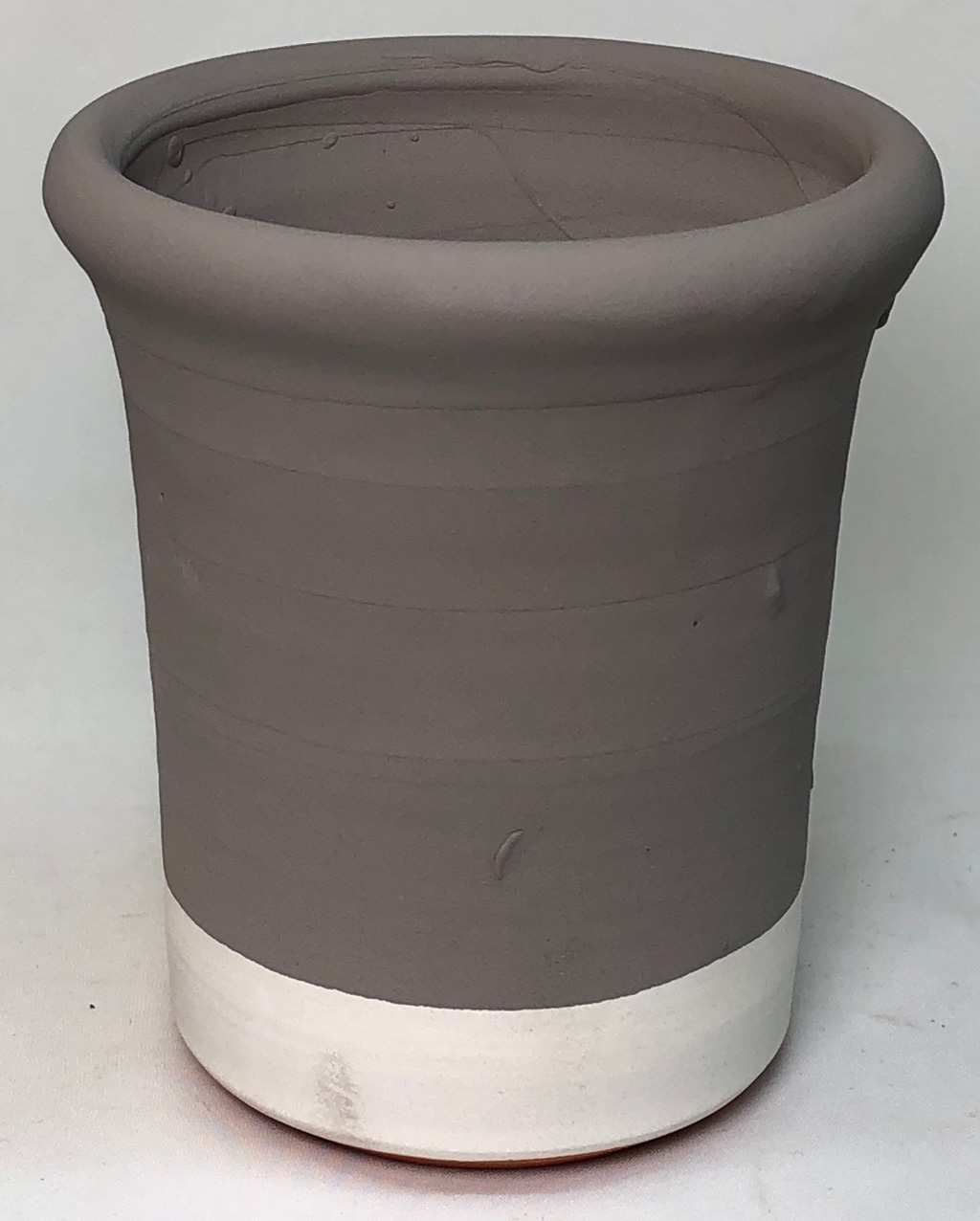| Monthly Tech-Tip | No tracking! No ads! | |
Base-Coat Dipping Glaze
These are ceramic glazes intended for dipping but which contain a gum to enable them to adhere to the body better and tolerate over-layers without danger of flaking or cracking.
Key phrases linking here: base-coat dipping glaze, first-coat dipping, first coat, base coat - Learn more
Details
In ceramics and pottery, dipping glazes can be of two main types: For single layer or as a base for the application of other layers over top. We call the latter "base coat dipping" glazes (or first coat). When other layers of glaze are to be dipped or brushed over a dipping glaze (and no firings are done between layers), for reliable performance that dipping glaze needs to contain a binder (usually CMC gum) to fix it well to the body and harden it on drying. Without the binder, successive layers can pull the first away from the body. Binders are much more effective when the glaze has plenty of super-fine particles for them to bind with (thus bentonite additions are common in gummed dipping glazes). These glazes dry more slowly, go on thinner, and drip a lot during draining (compared to traditional single-layer dipping glazes). CMC is a good binder for this, but it will take less than you think. We have found a 5:95 mix of Laguna Gum Solution and water (by weight) produces a glaze that still dries well, this is about one-quarter of that needed in a brushing glaze. In production situations, it is wise to tune the percentage of CMC to be minimal, enough to provide adherence but not so much that drying time is excessive.
Some glaze recipes contain materials that make them hostile to multilayering. Materials that cause bubbling, for example, magnesium carbonate or spodumene, could be problematic. Materials that are partially soluble can make a slurry gel over time requiring the addition of water, this causes more shrinkage and cracking. High percentages of clays cause excessive shrinkage also. Glazes having too little clay, thus being powdery when dry, are also troublesome.
In recent years potters have become increasingly interested in layering glazes for visual effects. The commercial bottled products they use contain gum, so they can layer over each other without the danger of flaking or cracking off. So obviously, the base coat over which these are applied needs to be able to stay adhered well to survive being rewetted with each new overglaze. Turning a regular dipping glaze into one intended for over-laying will thus mean some sacrifice of fast-drying and even coverage (depending on the amount of binder you add).
Related Information
Commercial brushing glaze on a non-gummed dipping glaze: Crawling

This picture has its own page with more detail, click here to see it.
Non-gummed dipping glazes go on evenly and dry quickly on bisque ware (if properly gelled). But they only work well as a single layer. If you try to paint commercial gummed brushing glazes over them the latter will compromise their bond with the body, cracks will develop during drying and bare patches like this will result during firing. For multi-layering the base dipping glaze must be gummed (e.g. 1% CMC gum). It will go on thinner, drip longer and dry much slower, but that is the price to pay if you want to layer over it.
Crawling can happen when paint-on glazes are layered over dipping glazes

This picture has its own page with more detail, click here to see it.
This bowl was dipped in a non-gummed clear dipping glaze. Such glazes are optimized for fast drying and even coverage. However their bond with the bisque is fragile. The blue over-glaze was applied thickly on the rim (so it would run downward during firing). But during drying, it shrunk and pulled the base coat away at the rim (likely forming many tiny cracks at the interface between the clear and the bisque. That initiated the cascade of crawling. When gummed dipping glazes are going to be painted over, a base-coat dipping glaze should be used. What is that? It is simply a regular fast-dry dipping glaze with some CMC gum added (perhaps half the amount as what would be used for painting). There is a cost to this: Longer drying times after dipping and less even coverage. And gum destroys the ability to gel the glaze and make the slurry thixotropic.
Multi-Layering on a Large Bowl has Produced Crawling
What does it take to make this work?

This picture has its own page with more detail, click here to see it.
Dipping glazes are typically just rock powder in water (with a little clay), it is actually amazing when they dry and adhere to bisque ware well enough to not crawl like this! There are multiple factors that can make the glaze/body bond even more fragile:
-Bisque surface is smooth.
-Bisque absorbs less water because it is damp, too dense (fired too high) or ware is thin-walled.
-The glaze does not pass a sanity check (e.g. it has excessive clay and shrinks too much on drying or has inadequate clay and goes on too thick and doesn't harden enough).
-The glaze slurry is flocculated and has too much water.
With all of this, we are lucky to get one layer to stick well enough to survive handling and not come crawling out of the kiln! But when a second layer is added, the body bond really gets tested. Just the rewetting stresses it. If glaze #2 contains more clay the situation is even worse, it shrinks on drying and pulls the first one away from the body.
The solution: Use a base coat dipping glaze conditioned with CMC gum for layering over. The degree to which the glaze exhibits the issue determines the percentage of gum needed (CMC slows down drying so minimize it). Some people have double-dipped for years without doing this. I am not one of them.
How much CMC gum powder is in the gum solution you buy?

This picture has its own page with more detail, click here to see it.
We dried out 100 ml of Laguna gum solution and were left with this residue on the bottom of the container, 6.7g. Thus, a liter contains 67g. What if you need 10g of gum to achieve a 1.5% concentration in a liter of typical dipping glaze? That would be 10/0.067=149g. That liter of glaze thus has to be able to tolerate the addition of 140g of extra water without thinning too much (keep in mind that the gum also thins it).
Using boiling water and an hour of propeller mixing to make our own gum solution the highest practical level of CMC we can reach is 3.5%, it is not completely clear why.
Six layers, 85% Alberta Slip in the glaze, yet no cracking. How? CMC gum.

This picture has its own page with more detail, click here to see it.
Six layers of any normal dipping glaze would be impossible (flaking usually starts with the second). Yet this slurry is 85% plastic clay, it shrinks so much that it would be like a "dried-up lake bed" on the first layer. By the second it would all just fall off! How was it possible to dip six layers of this with no cracking? A 1% CMC gum addition added enough adhesive power to not only stick it on better but also counteract the drying shrinkage! Of course, there is a downside: A drying period is needed between each layer, the time depends on the porosity and wall thickness of the ware and the amount of gum. This also demonstrates the difference between the function of Veegum (and similar materials) with CMC. The former, if added to this recipe, would gel the slurry, require more water and increase the shrinkage, making the cracking much worse. We typically use a mix of calcine:raw Alberta Slip to control drying shrinkage enough to enable crack-free application for one coat (without CMC). But, as a first coat dipping glaze, a CMC addition is required.
Think the idea of mixing your own glazes is dead? Nope!

This picture has its own page with more detail, click here to see it.
These are two pallets (of three) that went on a semi-trailer load to a Plainsman Clays store in Edmonton this week. They are packed with hundreds of bags of powders used to mix glazes. More and more orders for raw ceramic materials are coming in all the time. Maybe you are using lots of bottled glazes but for a cover or a liner glaze it is better to mix your own. And cheaper! And there are lots of recipes and premixed powders here to do it. One of the big advantages is that when you dip ware into a properly mixed slurry it goes on perfectly even, does not run and dries on the bisque in seconds. No bottled glaze can do that.
For even coverage white majolica glazes must be applied by dipping

This picture has its own page with more detail, click here to see it.
The mug on the left has three coats of Spectrum Majolica base, painted on by brush. Drying was required after doing the inside coats, so the total glazing time was several hours. The glaze layer is way too thin and it is not even at all! The one on the right was dipped in a 5 gallon bucket-full of G3890 Arbuckle white (that was weighed out according to a recipe and slurried at 1.62 specific gravity). It took seconds to dip-apply, the thickness coverage is good. As is obvious, it makes sense to make your own base white. Then decorate using the overglaze colors (e.g. the Spectrum Majolica series). Another advantage of making your own white is that you can splurge on the amount of opacifier (in this case 9% zircon and 4% tin oxide), to achieve maximum whiteness and opacity. And, you can proportion a mix of two frits (having higher and lower thermal expansion) to fine-tune the fit with the body (a big issue at low fire).
Inbound Photo Links
 You may know Veegum T but do you know VeeGum CER? |
 Learn to mix any of your glazes for these three application methods |
Links
| Glossary |
Dipping Glaze
In traditional ceramics and pottery dipping glazes can be of two main types: For single layer and for application of other layers overtop. Understanding the difference is important. |
| Glossary |
Brushing Glaze
Hobbyists and increasing numbers of potters use commercial paint-on glazes. It's convenient, there are lots of visual effects. There are also issues compared to dipping glazes. You can also make your own. |
| Glossary |
Glaze Layering
In hobby ceramics and pottery it is common to layer glazes for visual effects. Using brush-on glazes it is easy. But how to do it with dipping glazes? Or apply brush-ons on to dipped base coats? |
| Glossary |
Thixotropy
Thixotropy is a property of ceramic slurries of high water content. Thixotropic suspensions flow when moving but gel after sitting (for a few moments more depending on application). This phenomenon is helpful in getting even, drip-free glaze coverage. |
| Glossary |
Spray Glazing
In ceramic industry glazes are often sprayed, especially in sanitary ware. The technique is important. |
| Glossary |
Dip Glazing
A method of applying glaze quickly and evenly to pottery. |
| Materials |
CMC Gum
CMC gum is indispensable for many types of ceramic glazes. It is a glue and is mainly used to slow drying and improve adhesion and dry hardness. |
| By Tony Hansen Follow me on        |  |
Got a Question?
Buy me a coffee and we can talk

https://digitalfire.com, All Rights Reserved
Privacy Policy
